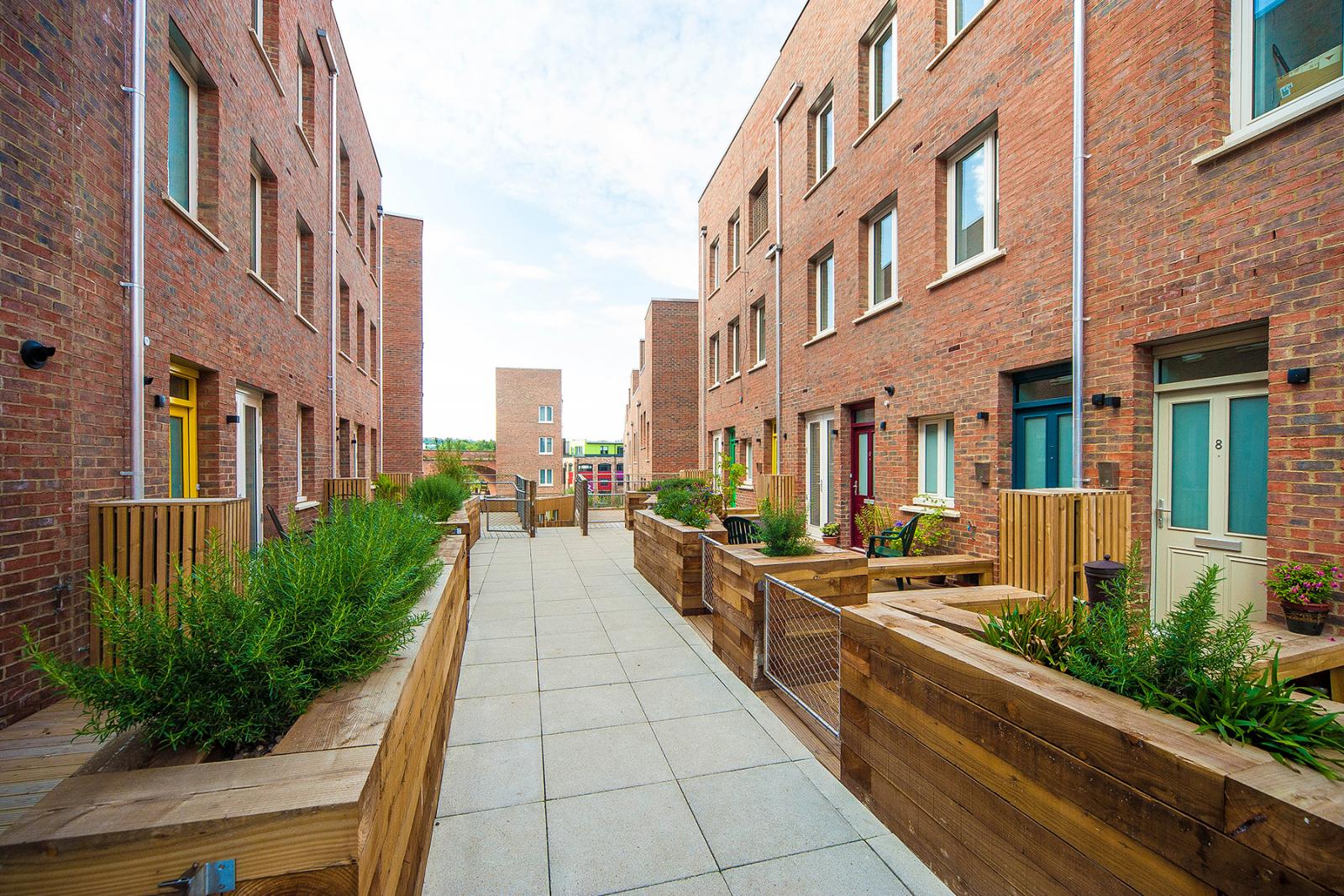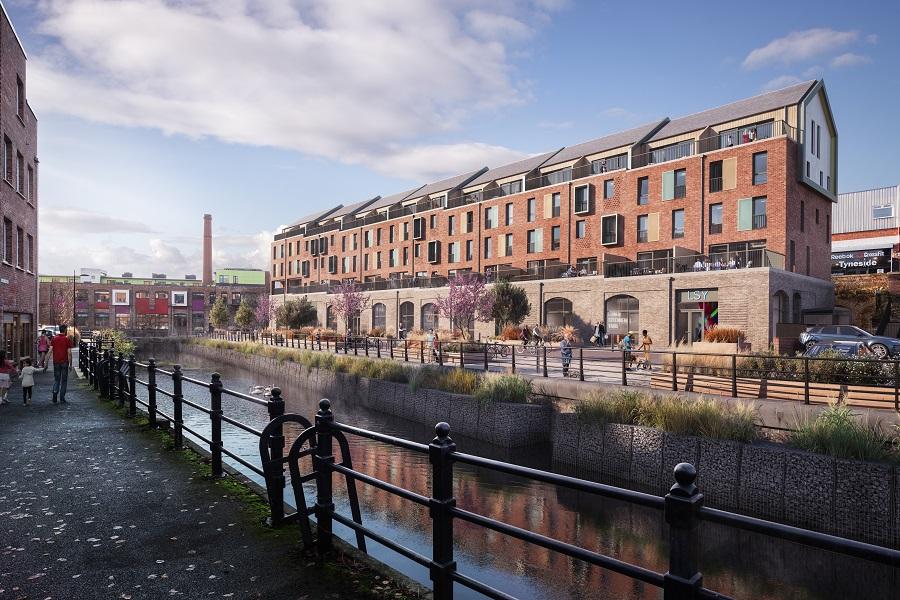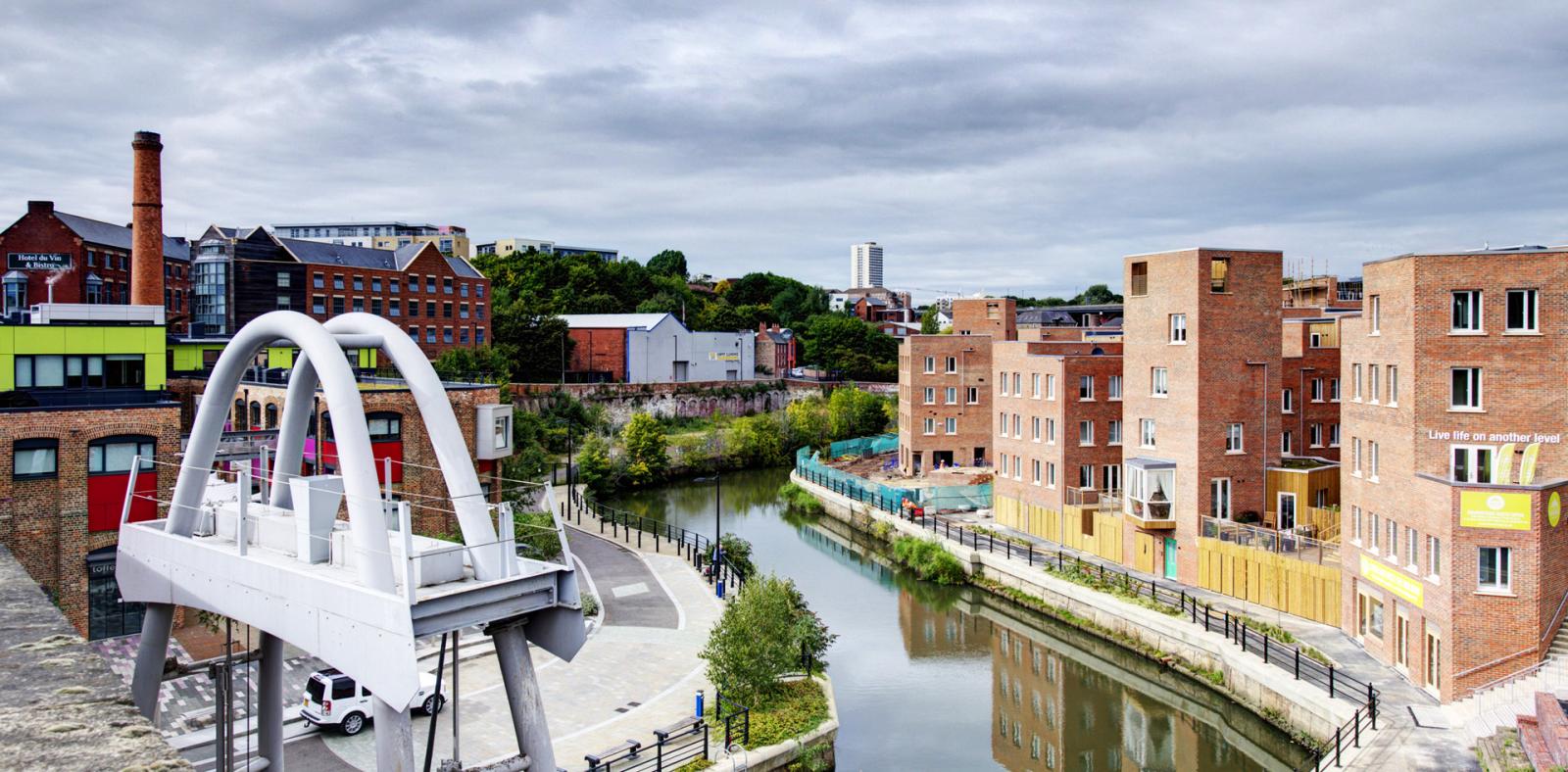Carillion-igloo, a joint venture company formed between The igloo Regeneration Partnership and Carillion plc was selected by Newcastle City Council and the Homes and Communities Agency to work in partnership with them in the redevelopment of a number of sites in the Lower Ouseburn Valley, Newcastle. The regeneration project has been carried out in line with the sustainable investment policy of Igloo and consists of 5 phases. Phase 1: The Mailings focused on the transformation of a former industrial brownfield into a vibrant residential area on the banks of the Ouseburn promoting sustainable, low-energy living, flood protection and community building. These objectives were achieved by green areas creation, sustainable drainage system application and unique urban planning measures. (2, 15)
Overview
Nature-based solution
- Nature on buildings (external)
- Green roofs
- Grey infrastructure featuring greens
- Alley or street trees and other street vegetation
- House gardens
- Community gardens and allotments
- Allotments
- Green areas for water management
- Rain gardens
- Sustainable urban drainage systems
Key challenges
- Water management (SDG 6)
- Stormwater and rainfall management and storage
- Green space, habitats and biodiversity (SDG 15)
- Green space creation and/or management
- Regeneration, land-use and urban development
- Conversion of former industrial areas
- Promote natural styles of landscape design for urban development
- Social justice, cohesion and equity (SDG 10)
- Social cohesion
- Cultural heritage and cultural diversity
- Protection of historic and cultural landscape/infrastructure
Focus
Project objectives
Implementation activities
Main beneficiaries
- Local government/Municipality
- Private sector/Corporate/Company
- Citizens or community groups
Governance
Management set-up
- Co-governance with government and non-government actors
Type of initiating organisation
- Local government/municipality
Participatory approaches/ community involvement
- Co-planning (e.g. stakeholder workshops, focus groups, participatory mapping)
- Dissemination of information and education
- Consultation (e.g. workshop, surveys, community meetings, town halls)
Details on the roles of the organisations involved in the project
Project implemented in response to ...
Financing
Total cost
Source(s) of funding
- Corporate investment
- Other
Type of funding
- Direct funding (grants, subsidies, or self-financed projects by private entities)
- Unknown
Non-financial contribution
- Provision of labour
Impacts and Monitoring
Environmental impacts
- Climate change
- Strengthened capacity to address climate hazards/natural disasters
- Water management and blue areas
- Increased protection against flooding
- Improved stormwater management
- Green space and habitat
- Promotion of naturalistic styles of landscape design for urban development
- Increased green space area
Economic impacts
- Stimulate development in deprived areas
- Attraction of business and investment
Socio-cultural impacts
- Social justice and cohesion
- Improved social cohesion
- Improved liveability
- Increased opportunities for social interaction
- Increased access to healthy/affordable food
- Increased sustainability of agriculture practices
- Cultural heritage and sense of place
- Promotion of cultural diversity
Type of reported impacts
Presence of formal monitoring system
Presence of indicators used in reporting
Presence of monitoring/ evaluation reports
Availability of a web-based monitoring tool
References
2. URBED. (n.a.). Lower Ouseburn Valley Masterplan. Urbed. Projects. Accessed on October 23, 2020, Source link
3. Igloo. (2013). Carillion-Igloo: Newcastle: The Malings, Ouseburn. Sustainable property investment urban regeneration. Website not available
4. Ouseburn Trust. (n.d.). Regeneration. Ouseburn Valley. Accessed on October 23, 2020, Source link
5. Ouseburn. (n.d.). The Malings. Plans. Accessed on October 23, 2020, Website not available
6. URBED. (2013). Lower Ouseburn Valley. About Us. Ouseburn Consultation Info Boards. Accessed on October 23, 2020, Source link
7. The Guardian. (2015). The Malings review - a welcome tale of the riverbank. Moore, R. 1st November. Accessed on October 23, 2020, Source link
8. Worldwide FDI and Trade. (2014). Learning from the past Newcastle looks to protect the future. Parsons, R. 21 October. Worldwide Foreign Direct Investment and Trade. Website not available
9. The Journal. (2015). Newcastle's Malmo Quay development showcased to international audience. Ford, C. 16 January. Website not available
10. Ouseburn Futures & NCC. (2012). Ouseburn Regeneration Plan 2012-2020. A framework for the regeneration of Ouseburn from 2012 onward. Newcastle City Council. Accessed on October 23, 2020, Source link
11. Housing. (2013). Work starts on eco-homes on banks of Ouseburn. McKenna, M. 28 October. Website not available
12. Igloo Regeneration Ltd. (n.d.). The Malings, Newcastle. Desing Council, CABE. Case study, Final. Accessed on October 23, 2020, Source link
13. Igloo. (n.d.). Footprint. Accessed on October 23, 2020, Source link
14. Mikhail Riches. (n.d.). New homes and businesses for an existing community within a post-industrial landscape. Malmo Quay, Newcastle. Text view. Accessed on October 23, 2020, Source link
15. Igloo. (n.a). Ouseburn Valley, Newcastle. Accessed on October 23, 2020, Source link





